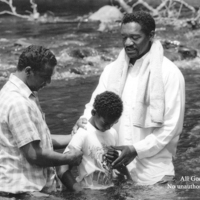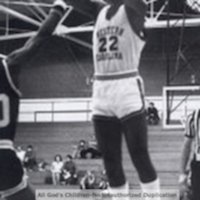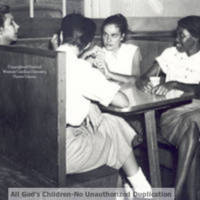Browse Exhibits (5 total)
Introduction: Revealing an Invisible History

African Americans form an important part of the diverse population of southern Appalachia, yet their histories have often been ignored. Today, heritage organizations and individuals like Ann Miller Woodford are working to gather information on African American contributions to the life of our region. This exhibit uses that material to reveal an invisible history of African Americans in far Western North Carolina.
Sports: A Way Out for Some

High school sports were and still are an initial part of rural mountain culture in Western Carolina. In the post-Civil Rights era many African American students gravitated towards sports to escape the hardships of daily life and for some it was a ticket to a brighter future. Integrated sports teams helped to bring communities together and allowed many athletes to move on to higher education. This exhibit showcases some of Western Carolina’s prime athletes that rose to fame in the sports world and helped to better their community.
Teaching to Make a Difference

It would not be possible to adequately represent the importance of the teachers and schools in this community. African American teachers and schools played the leading role of teaching young students how important they were, and that they could be somebody.
This exhibit aims to represent the significance of these special individuals and institutions by looking at segregated schools, and the importance of teachers in the classroom as well as in the community.
The exhibit also includes a look into the Allen School, which was an African-American female boarding school in Asheville. Lastly, we will take a look at higher education for African-American students in far western North Carolina, with a spotlight on Western Carolina University.
The Heart of Western North Carolina

This exhibit will showcase the heart of the African American community in Western North Carolina. What is the heart of this amazing community you might ask? It is the religion. Religion in WNC has gotten the African American community through many trials and tribulations. It has provided them with strong leaders like Rev. Dr. Joseph H. Smith and Rev. Charlsie Sweat. Religion has given the members of the community the ability to host events like the 1998 Gospel Festival that not only brought African Americans closer to each other but allowed people of different races and cultures to grow closer with this community.
Veterans: First Serving Their Country, Then Serving Their Community
After serving their country, African American veterans from Western North Carolina came home and served their communities diligently. Not only have the veterans served their country with diligence, upon returning to their homes towns, they wished to make those places better. These individuals played a vital role in the communities in which they lived. Most of these individuals were avid members of their local churches and community organizations. Furthermore, some of these individials went on to influence their surrounding communities. These veterans are significant members of the African American community in Western North Carolina, that are also helping other types of communities region wide.